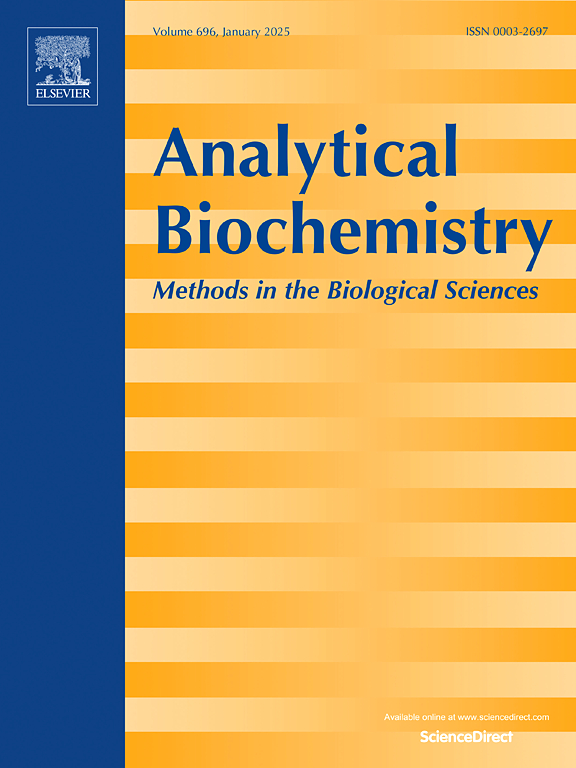TransCNN: A novel architecture combining transformer and TextCNN for detecting N4-acetylcytidine sites in human mRNA
IF 2.5
4区 生物学
Q2 BIOCHEMICAL RESEARCH METHODS
引用次数: 0
Abstract
N4-acetylcytidine (ac4C), a pivotal post-transcriptional RNA modification, is central to understanding transcriptional regulation and diverse biological processes. As a key determinant of RNA structural stability and functional regulation, ac4C has been strongly associated with multiple human diseases. We can obtain a better understanding of regulation mechanism of gene expression by identifying ac4C sites rapidly and precisely. However, existing predictive approaches are constrained by limitations in feature representation and sequence context modeling, necessitating the development of advanced methodologies. In this study, we introduce a novel architecture named TransCNN that integrates transformer and Text convolutional neural network (TextCNN) to predict ac4C sites. TransCNN demonstrates superior performance compared to existing models on both 10-fold cross-validation and independent dataset with the accuracy of 83.27 % and 82.89 %, respectively. The enhanced performance of TransCNN is attributed to the transformer's ability to extract adaptive features and TextCNN's capability to form both narrow and broad connections within the sequence. This study aims to contribute significantly to the field by advancing the understanding and prediction of RNA modifications. The datasets and code used in this study are available at https://github.com/liukai23157/TransCNN.

transnn:一种结合transformer和TextCNN的新型结构,用于检测人类mRNA中的n4 -乙酰胞苷位点
n4 -乙酰胞苷(ac4C)是一种关键的转录后RNA修饰,对理解转录调控和多种生物过程至关重要。作为RNA结构稳定性和功能调控的关键决定因素,ac4C与多种人类疾病密切相关。通过快速准确地鉴定ac4C位点,可以更好地了解基因表达的调控机制。然而,现有的预测方法受到特征表示和序列上下文建模的限制,需要开发先进的方法。在这项研究中,我们引入了一种名为TransCNN的新架构,该架构集成了变压器和文本卷积神经网络(TextCNN)来预测ac4C位点。与现有模型相比,TransCNN在10倍交叉验证和独立数据集上的准确率分别为83.27%和82.89%。TransCNN的性能增强归功于变压器提取自适应特征的能力,以及TextCNN在序列内形成窄连接和宽连接的能力。本研究旨在通过推进对RNA修饰的理解和预测,为该领域做出重大贡献。本研究中使用的数据集和代码可在https://github.com/liukai23157/TransCNN上获得。
本文章由计算机程序翻译,如有差异,请以英文原文为准。
求助全文
约1分钟内获得全文
求助全文
来源期刊

Analytical biochemistry
生物-分析化学
CiteScore
5.70
自引率
0.00%
发文量
283
审稿时长
44 days
期刊介绍:
The journal''s title Analytical Biochemistry: Methods in the Biological Sciences declares its broad scope: methods for the basic biological sciences that include biochemistry, molecular genetics, cell biology, proteomics, immunology, bioinformatics and wherever the frontiers of research take the field.
The emphasis is on methods from the strictly analytical to the more preparative that would include novel approaches to protein purification as well as improvements in cell and organ culture. The actual techniques are equally inclusive ranging from aptamers to zymology.
The journal has been particularly active in:
-Analytical techniques for biological molecules-
Aptamer selection and utilization-
Biosensors-
Chromatography-
Cloning, sequencing and mutagenesis-
Electrochemical methods-
Electrophoresis-
Enzyme characterization methods-
Immunological approaches-
Mass spectrometry of proteins and nucleic acids-
Metabolomics-
Nano level techniques-
Optical spectroscopy in all its forms.
The journal is reluctant to include most drug and strictly clinical studies as there are more suitable publication platforms for these types of papers.
 求助内容:
求助内容: 应助结果提醒方式:
应助结果提醒方式:


